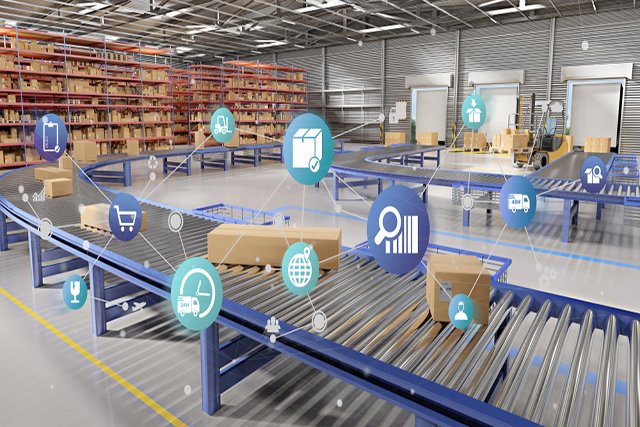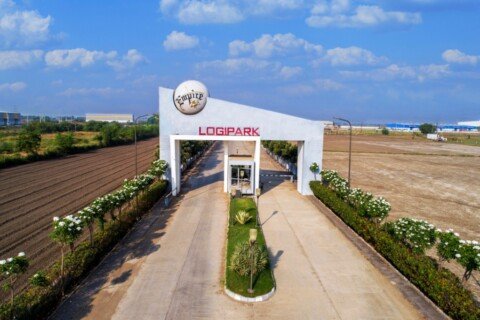Indian e-commerce logistics sector has witnessed tremendous growth in the last one decade. Even during the pandemic, e-commerce adoption witnessed exceptional performance and has spurred more and more people online. According to our compiled reports, e-commerce logistics grew 70 per cent year-on-year to facilitate 2.55 bn shipments in 2020, and further projections say that this will increase to about 10.5 bn by 2025. Despite the pandemic, e-commerce enabled 20 million new shoppers in 2020. The overall user base is further expected to reach 190 million users by the end of 2021. The growth has mainly come on the back of Small and Medium Enterprises (SMEs), increased digital penetration, surge in smart phones adoption and new shoppers being added to the fray from tier II, III and IV cities as technology reaches the most intricate parts of the Indian heartland and promises a very bright future.
Ritika Arora Bhola
Boom in e-commerce amidst the gloom
Experts believe that Indian e-commerce logistics is very bullish right now and will grow further as e-commerce and online deliveries become the primary buying channel for all.
According to Jasmine Singh, Senior Executive Director and National Head- Industrial, Land & Logistics Services at CBRE India,“Owing to greater convenience and safety, most customers are opting for online retail avenues. Greater internet penetration has also contributed to this growth. With more e-commerce players betting on tier II and tier III cities as preferred warehousing hubs and investment destinations, it is further estimated that 88 per cent of the online shoppers, who are going to be added in the period of 2021 to 2030 will be from tier II and III cities. As the era of digitisation and e-tailing continues to evolve, the e-commerce sector is expected to enable customers’ innovative and sustainable shopping experience in the coming years.”
Singh further highlights major trends which will shape up the future of e-commerce logistics trade in India.
- Given the shift of consumer preference for convenient and quick end-to-end doorstep delivery, optimisation of logistics and supply chain mechanisms will become essential
- With the backdrop of Industry 4.0, digitisation and evolution of customer behaviour, e-commerce, and supply chain evolution have a long way to go
- Technological advancements, including autonomous vehicles and warehouses, drones, and GPS-monitored robots for last-mile deliveries, will be central to drive more agility, productivity, and seamless customer experiences
- Additionally, with the recent e-commerce guidelines, greater transparency for end customers can be expected
- While certain actions may boost the government’s ‘Make in India’ initiative, the customer shall once again be the ‘king’ with more access to diverse options. Overall, the policy impetus can be expected to consider the interest of all players and open avenues for the growth of the sector.
“We’ve seen how the COVID-19 pandemic has accelerated digital adoption for consumers and businesses alike. E-commerce is booming, nowhere more so than right here in India, as Indian e-commerce logistics is expected to reach US$ 11.48 billion by 2027, up from US$ 2.93 billion in 2019, growing at an estimated CAGR of 18.8 per cent from 2020 to 2027. With logistics playing a critical role to deliver goods, once purchased, to the consumer, the Indian e-commerce logistics market has also benefitted due to an increase in internet penetration,”informs Mohamad Sayegh, Vice President- Operations – India at FedEx Express Middle East, Indian subcontinent and Africa (MEISA).
He continues, “A surge in smartphone adoption has led to easier access and an increase in volume of goods purchased online, which then require last mile delivery across the country. With the proliferation of e-commerce and online hyper-local markets, the Indian e-retail market is primed to reach nearly 300 million to 350 million shoppers by 2025. To keep up with this surge in demand, companies, including SMEs are embracing online commercial platforms, and technological advancements to satisfy and retain customers. Especially in light of COVID-19 restrictions and the current environment, e-commerce is becoming the retail option of choice as it ensures social distancing for consumers, and contactless delivery options are now a standard service for many firms.”
Definitely, Ketan Kulkarni, CMO and Head– Business Development at Blue Dart says, “E-commerce gained a significant positive momentum during the pandemic as everything from groceries to consumer electronics could only be sourced online. Going forward, as the world aligns itself with the ‘new normal,’ the future of e-commerce logistics is going to be very significant.”
Saahil Goel, Co-founder and CEO at Shiprocket agrees! “For the logistics and transportation sector, the growth of e-commerce logistics will pave the way for more streamlined workflows, and increased tech-led innovation with features such as Augmented Reality being incorporated into the day-to-day operations to bridge the gap between physical and digital experiences.”
“India’s e-commerce logistics sector has gained immense traction over the past few years. With increased demand from tier II and III cities in recent times combined with increased preference for same-day/next-day deliveries and the incorporation of cutting-edge technology to introduce features such as real-time tracking, automation of warehouses, AI-led inventory management, etc. the e-commerce logistics space is set to witness exponential growth as third-party tech-logistics platforms expand their suite of offerings to cater to the growing demand.”
Industry veteran Sushil Rathi, currently COO of Mahindra Logistics points out that customers’ expectations are increasing greatly and both individuals and businesses are expected to get goods faster, more flexibly, and in the case of consumers—at low or no delivery cost. “As a result the logistics sector is undergoing immense pressure to deliver a better service at an ever-lower cost.”
“The growth e-commerce segment has accelerated the demand not only for transportation but also for sort centres, fulfilment centres, return processing, last mile delivery, etc. In the future, we will witness many breakthroughs in last-mile delivery models and technology integrations, offering greater comfort for the end consumers. The consumers are expecting same day delivery, especially for the groceries and essential items, and hence the concept of hyperlocal delivery business model has emerged. Meanwhile, an increase in omnichannel distribution models especially in e-commerce segment can be observed, a higher level of service integration and a greater adoption of technology would help logistics players in creating the customer value proposition.”
Small towns outpace tier I cities
The ongoing pandemic has seen more demand for variety of products coming in from the tier III and IV cities. With the availability of smartphones and greater e-commerce reach, people are finding it easier and convenient to buy anything to everything from homes with just a ‘Click’, while following all the COVID-19 protocols including social distancing rather than crowding the marketplaces. However, reaching out to these remote locations is a challenge in itself. Lack of adequate road and transportation infrastructure, connectivity issues, unskilled manpower are some of the bottlenecks which need to be addressed.
Rathi opines, “When it comes to transporting goods to remote locations and tier II and III cities, cash-on-delivery (COD) continues to be the preferred mode of payment in these towns. Although more than a dozen pre-paid payment options are available, customers prefer to pay only after getting the product in their hands. Managing the cash for COD orders in itself is a big challenge, especially in terms of high value products.”
“Another challenge we face is the road infrastructure of tier II and III cities causing delays in the delivery. While the e-commerce demand is increasing in these cities, we continue to face challenges towards timely deliveries. Although with more accessible warehousing facilities, the goods are transported with better ease and effectiveness. To mitigate the challenge of infrastructure, we have adopted hub and spoke arrangement of deliveries which helps in faster distribution of goods to remote locations.”
Stressing on the need for robust infrastructure, Goel asserts, “With the demand from smaller cities and towns increasing over the past few years, there is an urgent need for a robust infrastructure to be in place. Besides this, the pandemic and the subsequent lockdowns have further wreaked havoc in terms of the transportation of goods from one location to another. Strengthening of infrastructure and connectivity will further facilitate seamless, integrated end-to-end services to be carried out in such locations. Shiprocket is working to expand its presence pan-India for seamless workflow automation by establishing new fulfilment centres that will enable faster deliveries for both the merchant and the end user.”
Talking about Bluedart’s services and delivering products to the largest number of pin codes nationwide, Kulkarni says, “One of Blue Dart’s (part of the DPDHL Group) key USPs is our unparalleled reach. With access to over 35,000 locations across the nation and 220 countries and territories worldwide, Blue Dart provides customers with the most comprehensive express logistics network worldwide. As a result of the reach expansion programme Delivery Anywhere Now or DAWN that we recently conducted, our serviceable locations doubled catering specifically to tier II and III cities. Apart from this, we also launched a programme Revenue Increase from Small Towns & SMEs (RISE) to support businesses from Bharat to cater to a larger market. Both initiatives aimed to expand our reach into small towns to bring the world closer to these cities and towns. We have aligned ourselves with the Government’s ‘Make in India’ initiative and are keen to bring the world to these tier II and III cities and towns too.”
Blue Dart has also made extensive investments in infrastructure, manpower, new-age technology and automation to drive business growth and create value for all.
Interconnectivity between growth and infrastructure
In the last few years, increased penetration of e-commerce and digitisation has led to an influx of domestic and foreign investments in the warehousing market. Growth in e-commerce has fuelled the demand for warehousing, technology and last mile connectivity. Experts say, as e-commerce penetration will continue to grow in the established markets in the coming years, less established markets will eventually catch up due to the increasing presence of e-commerce drivers. According to CBRE’s Global E-Commerce Outlook Report, India’s e-commerce penetration rate is expected to increase from about 5 per cent in 2020 to more than 15 per cent in 2025.
“Identifying the enormous growth potential of e-commerce, many online retail platforms began investing in warehouses to ensure a smooth supply chain. With online shopping and e-tailing garnering popularity among the masses, end-to-end delivery has become central to an efficient supply chain flow. Further, to enable last-mile connectivity, digital tools and data analytics also came to the forefront. These tech deployments enable complete and constant visibility of the consignment through GPS installation. Further, leading-edge technologies like AI enabling predictive analysis of supply chain data, Industrial Intelligence of Things (IIoT) enabling predictive repairs and maintenance, and Smart Factories are expected to drive the future of e-commerce logistics in India,” explains Singh.
According to Kulkarni, “E-commerce has contributed and prompted an increase in investment in road infrastructure, last mile connectivity and emerging technologies. Prior to the pandemic, e-commerce was still gaining momentum in India—a fact that was propelled further due to the immobility of individuals and transport during the pandemic. The increase in demand for e-commerce has certainly highlighted the need for a more efficient supply chain to be in place that would reduce turnaround time and increase efficiency.”
He adds, “A larger facet that has prompted this growth is investment in road and supporting infrastructure, etc. The introduction of the Goods and Services Tax (GST), the National Logistics Policy, National Air Cargo Policy, National E-commerce Policy, dedicated freight corridors, as well as the logistics initiatives highlighted in the Union Budget 2021 are all Governmental initiatives aimed at bringing down logistics costs from 14 per cent to 7 per cent. A reduction in logistics costs, an increase in efficiency owing to emerging technologies and a more seamless logistics network, will help India take one step further in its endeavour to be at par with other developed economies.”
Focussing on the significance of IT, Sayegh says, “Logistics companies can be the differentiator in an increasingly competitive global marketplace, with technological innovations playing a pivotal role. Tech integration has strengthened supply chain management and real-time tracking, increasing visibility, control and customisation over the end-to-end delivery experience. Additionally, automation and data analytics are fostering the tremendous potential for the logistics industry and are simplifying processes right from order processing, to warehousing, to distribution.”
In agreement, Goel says, “The surge in online shopping fueled by the pervasive presence of social media has propelled e-commerce businesses/sellers to augment their operations and offerings such as quick deliveries, inventory management, order fulfilment, packaging, shipping, etc. as in today’s world, customer experience is the priority. Besides, being a highly lucrative sector, e-commerce is witnessing a rise in the investments being made, further enabling businesses to strengthen their services and expand their presence.”
Rathi says they are constantly looking and working towards expanding growth significantly around consumer durables, e-commerce, and pharma.
“We consider them as consumption driven industries. We have deepened our focus by launching new solutions, like return processing, pop-up sort centres and integrated distribution services. These are evident in our continued growth in value-added services and in the e-commerce and consumer segments. The new facilities are developed to sustainable standards and allow us to provide flexible and scalable fulfilment and integrated distribution solutions for the e-commerce industry,” says Rathi.
“On the supply chain side, we are working towards expanding our growth well beyond the auto business.”
Cross-border commerce: The major facilitator
Cross-border e-commerce trade is definitely picking up in the ‘New Normal’ scenario. In the last one year, it has proved to be the new disruption in the logistics ecosystem as it provides retailers/wholesalers and even regular customers’ an opportunity to engage in purchasing products from outside borders, from the comfort of homes and offices.
Sanjay Keswani, Director- Global Platform and Strategic Alliances at Eunimart, (a cross border e-commerce startup using AI to enable small merchants sell internationally) informs, “Across the globe, cross-border e-commerce is growing at 17 per cent compared to domestic e-commerce and is projected to reach US$ 1 trillion by the end of 2021.”
“SMEs contribute to approximately 50 per cent of domestic e-commerce but are able to get to only 5per cent when looking at exports. India, with 50 million registered SMEs stands to gain most by the momentum due to the large range of diverse categories that Indian artisans are able to churn out,” says Keswani.
Not only India, even in countries such as China, US and the UK, cross border e-commerce is in full swing as consumers have become more conscious about affordable pricing with no compromise on product’s quality. A study conducted by Acapture states that India exports 16 per cent products to the US, 4.3 per cent to China and 3.3 per cent to UK using cross-border e-commerce channel. Similarly, when it comes to import, India gets 14 per cent of products from the USA, 6 per cent from the UK and 5 per cent from China.
Rachid Fergati, Managing Director, Middle East and Indian subcontinent at UPS explains that international businesses are likely to diversify their supply base resulting in exponential opportunities for countries such as India to play a key role in global value chains and enhance international trade. Supply chains will have to be more adaptable and flexible to help businesses remain resilient, competitive, and support these opportunities.
During the pandemic, UPS continued to forge connections to support the movement of essential commodities, healthcare materials, and business products between India and rest of the world. “Business continuity emerged as a key imperative during the pandemic and UPS have been able to successfully continue operationsin 220 countries and territories,” says Fergati.
“Given the coronavirus related supply chain restrictions at the time, UPS Healthcare and Hyderabad-based Dr Reddy’s created an emergency supply chain plan to replenish pharmaceutical stocks in US markets. These products were transported within the UPS network through the Cologne, Germany air hub, then to the UPS Worldport in Kentucky, before reaching its final destination on time and as promised. UPS also transported pharmaceuticals and medical aids from the Government of India to partner countries in Latin America.”
Another recent report by the International Air Transport Association (IATA), estimates that cargo will represent approximately 30 per cent of total revenues, a significant increase from the usual 12 per cent industry average. It will continue the increase in the coming years. Similarly, cargo tonne kilometers (CTK) will grow more than 13 per cent over 2020 levels and carriers will increase their share of cross-border trade. Also, IATA business confidence surveys of cargo heads reveal plenty of optimism for the years ahead.
Rathi highlights some of the cross-border e-commerce trends:
- Online shopping: Worldwide, e-commerce is valued at about US$5 trillion in 2021. Approximately 80 per cent of cross-border e-commerce is transported by air, which represents more than 20 per cent of global e-commerce value. Exploring the full potential of e-commerce requires noteworthy changes. Air cargo needs to match that therefore we need multimodal digital interoperability.
- Going digital: Digitisation in the sector has been gradually taking place. Due to e-commerce’s extraordinary growth rate, it has accelerated the pace. On the positive side, air cargo’s recent success has made investment possible. Airlines will make money available for digitisation projects because the return on investment looks promising.
- Focus on services: A focus on e-commerce products and services to build market share is essential. As passenger traffic remains suppressed, it may be possible to temporarily repurpose an airline fleet for cargo service. The capacity will need to be closely monitored to properly serve e-commerce customers in the longer run as more passenger traffic comes on board.
“Above mentioned facts and figures certainly proves that cross border e-commerce is the future of online shopping and Indian SMEs can the prime beneficiaries of this new-age retail model by overstepping the geographical barriers to access global market with higher margins and larger chunk of consumers,” feels Rathi.
UPS recently conducted a survey that highlights the growth potential of small businesses covering India and eight other key countries in Asia, Middle East, Europe and North America. UPS, along with Nathan Associates, also surveyed small businesses in India across 21 industries to understand the current e-commerce opportunities and challenges for SMEs. Some of the key findings pointed towards:
- Increase in awareness of existing government support programmes for small and medium-sized businesses (SMBs)
- Greater focus on skill development training and wider access to resources
- Build consumer trust in e-payments as India is still a cash-based society
- Apprise and update on trade agreements and tax benefits
- Keep the small businesses abreast with market information on export intended countries to increase export capacity
“We’ve seen that the pandemic has accelerated the need for better global infrastructure and other critical healthcare focussed innovations. We view this as a structural shift in the marketplace and in response we recently launched UPS Cold Chain Solutions, a comprehensive suite of cold chain technologies and capabilities that provide complete end-to-end temperature-controlled logistics,” says Fergati. “And in terms of technology, our UPS Premier product offers an upgrade for healthcare shipments with advanced sensor technology. All of our US COVID-19 vaccine shipments are using UPS Premier, and it is this product that enables our near-perfect delivery performance. We have plans to expand UPS Premier to Europe and Asia in the coming months.”
“A logistics partner, such as UPS, can assume a single carrier responsibility, with its own fleet of aircraft providing end-to-end logistics solutions, which is a strategic advantage for facilitating cross border trade. At a time, when lift capacity was impacted in and out of India, UPS continued to forge critical connections to support the movement of not only business products between India and rest of the world but also essential commodities and healthcare materials, assuming a single carrier responsibility,” expresses Fergati.
Unblocking bottlenecks in the trade
Cross-border e-commerce model is here to stay forever. Considering the spectacular growth in this segment in the last few years, it is clearly visible that cross border trade is the need of the hour and both businesses and investors have sharp eye on it. Cross-border e-commerce needs an efficient supply chain, speed and flexibility of operations and a certain push in terms of investment from both the public and private players as several SMEs have it already on their radar.
According to several reports, the Indian e-commerce market is expected to grow to US$ 200 billion by 2026. Much growth of the industry has been triggered by increasing internet and smartphone penetration. It is therefore not a surprise that massive international consumer and e-commerce companies are anchoring their presence in India. These developments will have a significant impact on cross-border trade to and from India. This also means that logistics will play a critical role in connecting these products, people and enterprises across borders.
Rathi points out two major challenges:
- Cross-border trade is completely dependent on the efficiency and resiliency of the global supply chains. Supply chains get severely impacted by the natural or manmade crises and changes in government policies. For instance, frequent changes in policies and tariff wars lead to confusion across various product categories in the last few years.
- Another major challenge that was witnessed during last fifteen months is a rampant increase in ocean freight and air freight charges. This coupled with severe shortage of ocean carriers has led to an unprecedented situation in cross-border trade. While this has impacted importers and exporters equally, it has also created a huge problem for freight forwarding companies. There margins are under pressure and working capital requirement has shot up manifolds.
Keswani says lack of knowledge is one the biggest challenges, “This lack of knowledge influences ‘Where to sell, what to sell, what price to sell at, how to sell and other such significant aspects’. After studying the market, we were able to identify the roadblocks and issues that confronted merchants and sellers when they looked to expand their horizon globally. Leveraging insights gained through thorough market research and experience, our platform caters to solve the four critical challenges faced by sellers such as payment, logistics, data intelligence and market access. By breaking down the operational barriers that revolve around cross-border e-commerce, Eunimart accelerates SME growth and launches them into the global marketplace.”
“We are seeing that the fastest growing customers are often those doing business across borders. Our industry plays a key role in connecting SMBs to global markets—being global is not just for big companies. Additionally, the e-commerce industry is all about speed, accuracy, and scale. To this, we also need to add a fourth critical component—compliance,” explains Fergati.
“Post-pandemic, countries have new protocols, additional border controls, and new documentation requirements for shippers and traders. The right partner needs to help SMBs navigate all of these requirements and to deliver what matters to their business and the economy in general. UPS technology simplifies international shipping so you can easily manage imports and exports. Our cross-border shipping and tracking tools help to speed up delivery time and customs clearance, while maintaining compliance with trade regulations.”
“The Indian government is aiming to build a trillion-dollar online economy by 2025, through its Digital India programme. With the growth in cross-border e-commerce, FedEx services will support SMBs to grow their exports. FedEx operates all-cargo flights through gateways in Mumbai, New Delhi and Bengaluru, connecting India to the world, and the world to India by connecting business across the nation with 99 per cent of the world’s GDP through its global air network,” adds Sayegh.
“Logistics companies around the globe are now transforming and adjusting to technologically integrated service models that generate new opportunities for individuals, and businesses, whatever their size,” says Sayegh.
FedEx has the network required to safely, reliably and quickly deliver goods to the end customer while serving the supply chains that fuel global trade. Launched in 2017, FedEx Delivery Manager, an interactive e-commerce delivery solution provides residential customers the flexibility and convenience to customise their home deliveries to suit their schedules.







